
$35.00 USD












$35.00 USD












Ice Studios is a creative domain. Founded by photographer Renell Medrano, it is a space in which the superstar and the everyday girl coexist without fuss, an approach rooted in Renell’s uptown upbringing—the Bronx, to be exact.
On July 6, 2024, women of every body shape and height— and nail length—wrapped the Water Street block in downtown New York City, in response to a casting call that Renell had announced on Instagram for a “chance to be featured in the new Ice Mag.” Her collective had the power to bring together Ice Girls across the Tri-State area and through Down South. Maybe 50 girls will show up, Renell thought. It was more like 500.
As a backdrop for inspiration, Renell had in mind Players, a softcore magazine, launched in 1973, featuring Black women, alongside writers and artists who captured the complexities of Black cultures, identities, and social issues of the time, blending sensuality with intellectual discourse. Its cultural significance notwithstanding, it catered to the male gaze. Ice Magazine reimagines Players, featuring 28 women, all transformed by an all-women crew—shot by Renell, with Nikki Nelms on hair, Raisa Flowers on makeup, and styling by Marika-Ella Ames.
Onlookers no longer have to question who the Ice Girl is. She is relentlessly herself.


Players magazine was published by Holloway House Publishing Company, founded by Bentley Morris and Ralph Weinstock. Familiar with Iceberg Slim’s Pimp: The Story of My Life, by chance? It was a work published under Holloway House that sold millions and took on a life of its own, influencing what would later be called “urban lit.” Morris and Weinstock recognized an opportunity to cater to a Black male audience to make some cash, and founded a Black erotica magazine.
While Players was started by two exploitative white publicists, it was shaped by Black writers. Los Angeles Poet Laureate Wanda Coleman and writers Joseph Nazel and Emory “Butch” Holmes served as editors; they featured and commissioned Black artists. Black Panther founder Huey Newton and writer Stanley Crouch cut their teeth at Players. The first issues were published in 1973, and featured teasers like “Check out your sex, love, and soul guide,” alongside an interview with music legend Sammy Davis Jr, and Pam Grier on the cover.
Players operated outside the Ebony and Jet stratosphere, but it still provided intellectual discourse and cultural essays that took a more radical approach. It went beyond inspiring Black excellence and pushed something more intriguing.
(Google “Harvard in Hell” by Justin D. Gifford to learn more and really get ya mind right.)

“I’d describe my aura as silver— strong, occasionally reflective, and always shimmering, with a touch of mystery and elegance.”








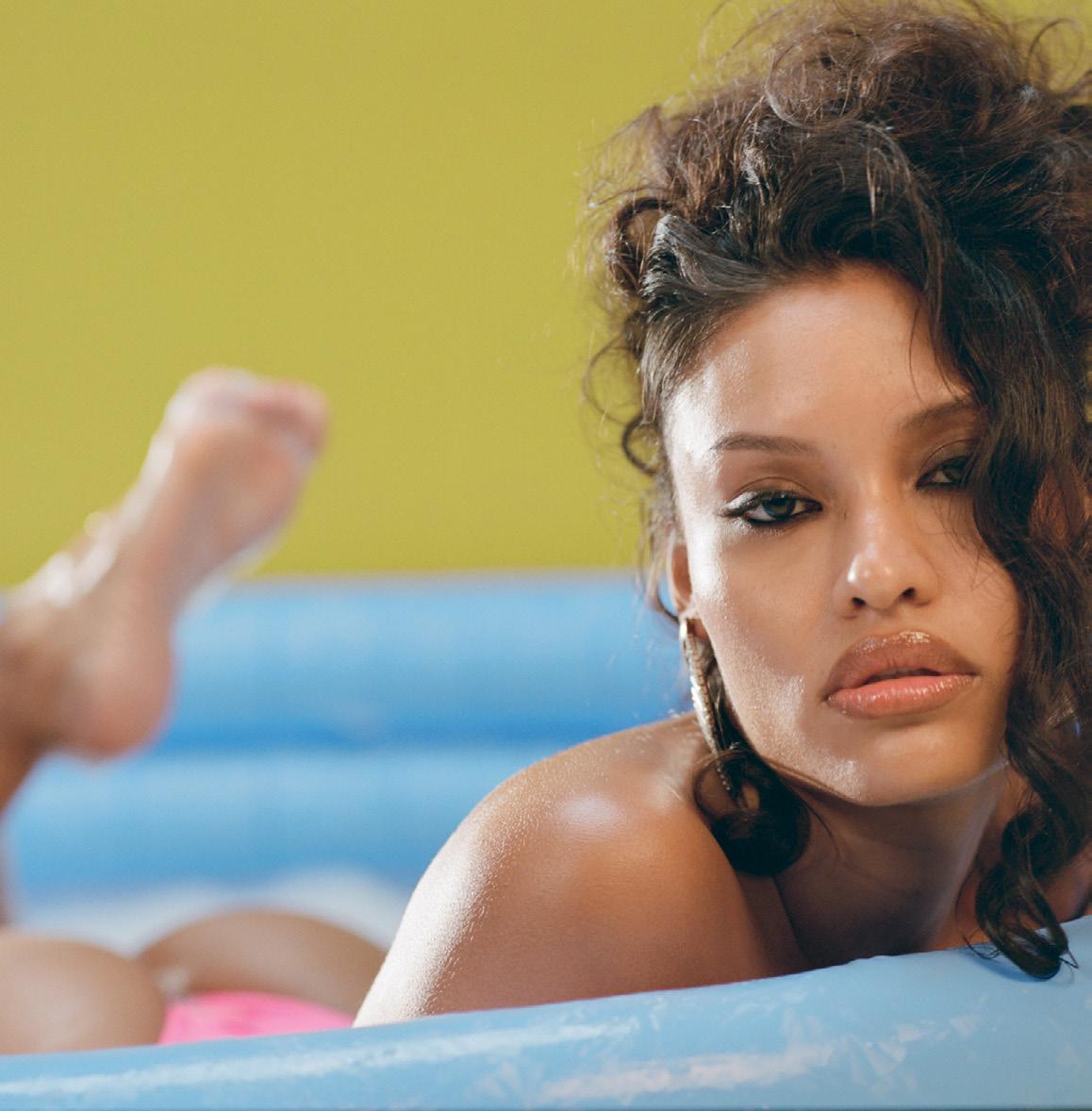
The most breathtaking, incomparable, delectable ICE MAG girls PLUS interviews, fashion, perspective and features…produced in limited quantity.


How are you still growing as a woman?
“I feel as Black women we are definitely rushed in age, compared to other races, and that does a lot to us— or at least to me— psychologically. give myself grace, because want to enjoy every bit of my growth.”

How did it feel to tap into a different part of yourself?
“This side of Bria finally made it past the mirror in my alone time with my headphones in, listening to 90s R&B. A new character has been unlocked.”

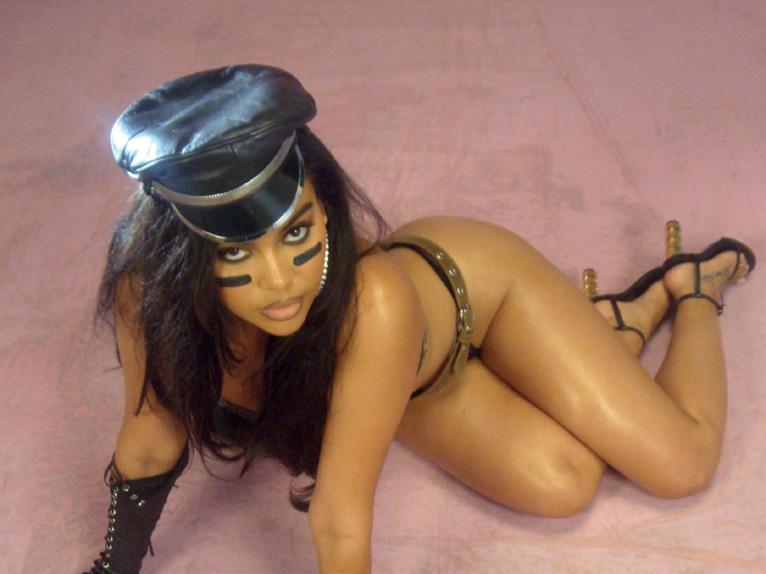
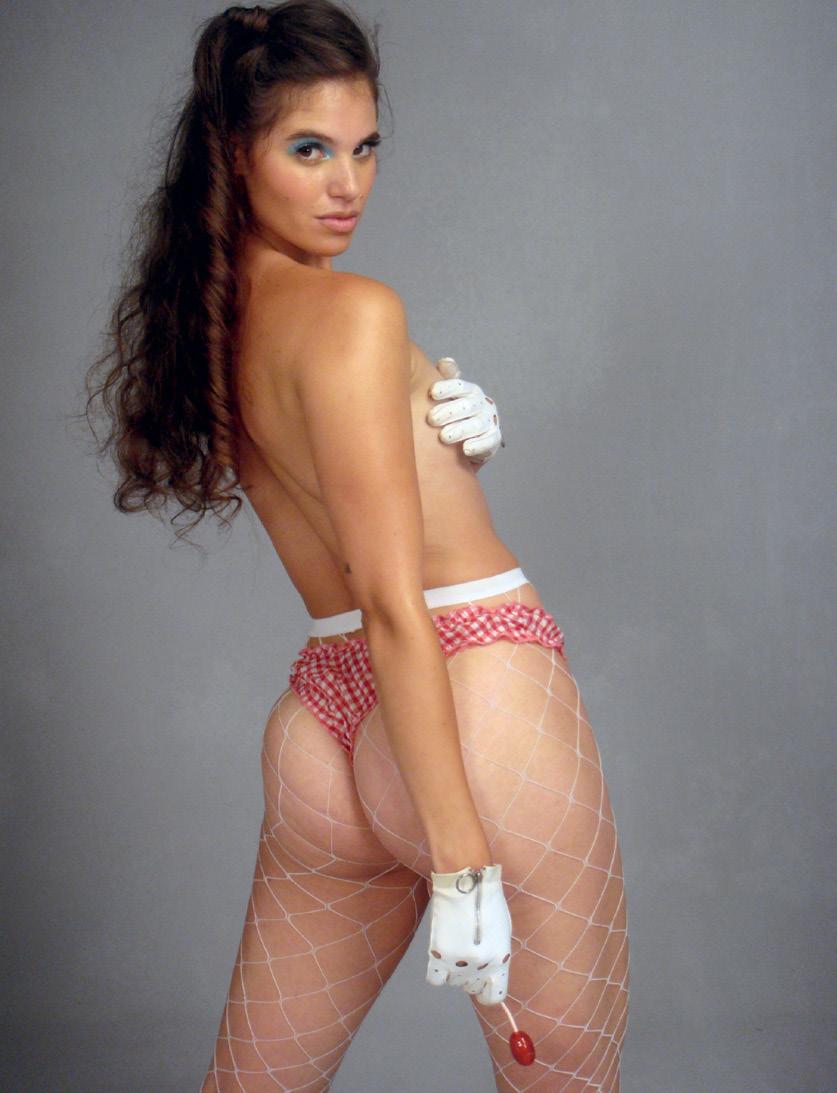


How would you describe your aura?
“Magnetic, mysterious, and alluring. If could picture a color, it would be a refreshing pale green.”

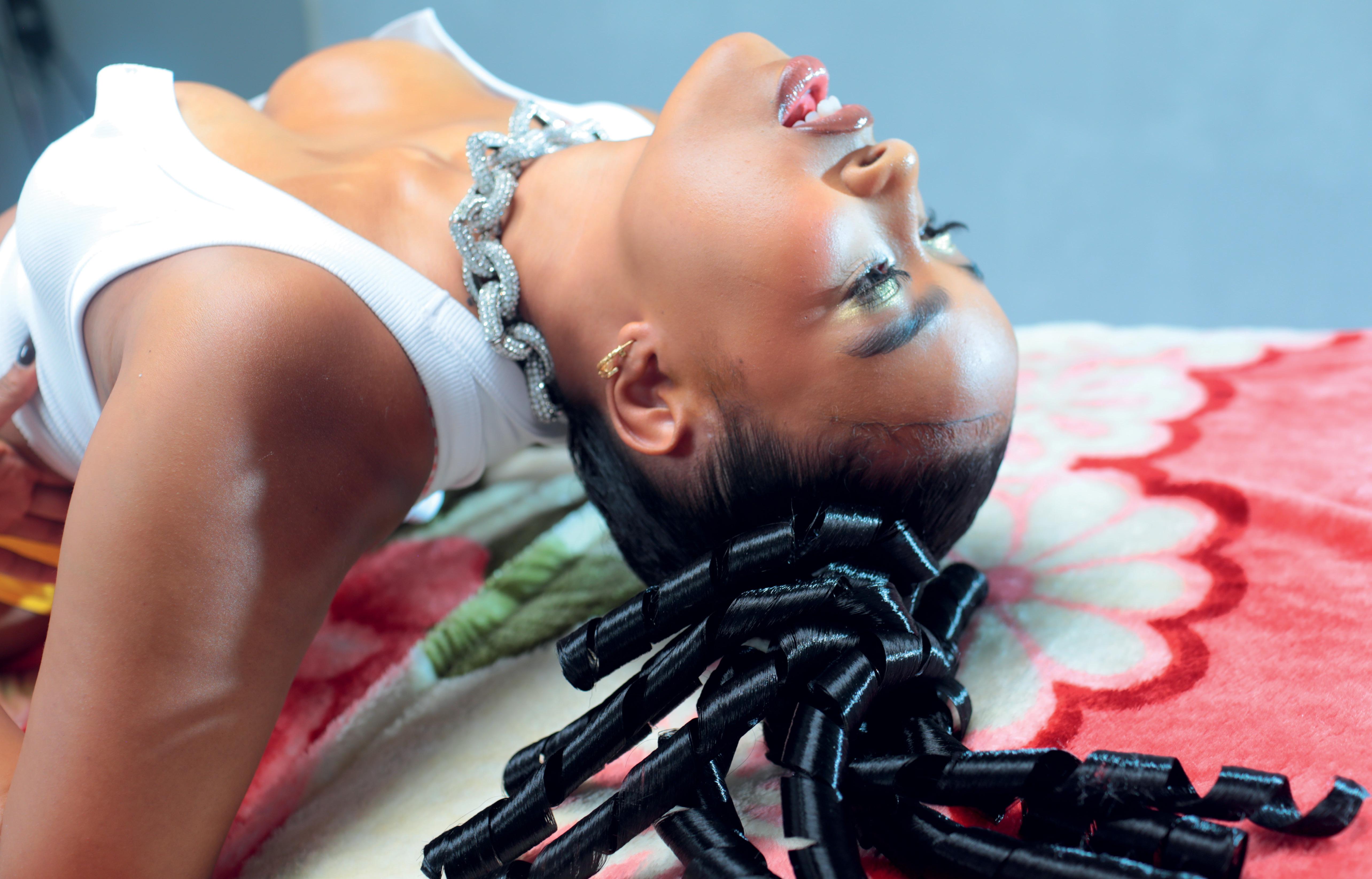
TUESDAY
How do you express your inner strength?
By speaking my mind, always.




How did it feel to tap into a different character, and a different part of yourself?
“Very dominating and powerful. I love my natural body, and it felt like the perfect outlet to really shut shit down and represent.”

What advice would you give to your younger self about embracing who you are?
“There is power in the way you want to translate your soul to others, and it needs to be seen.”
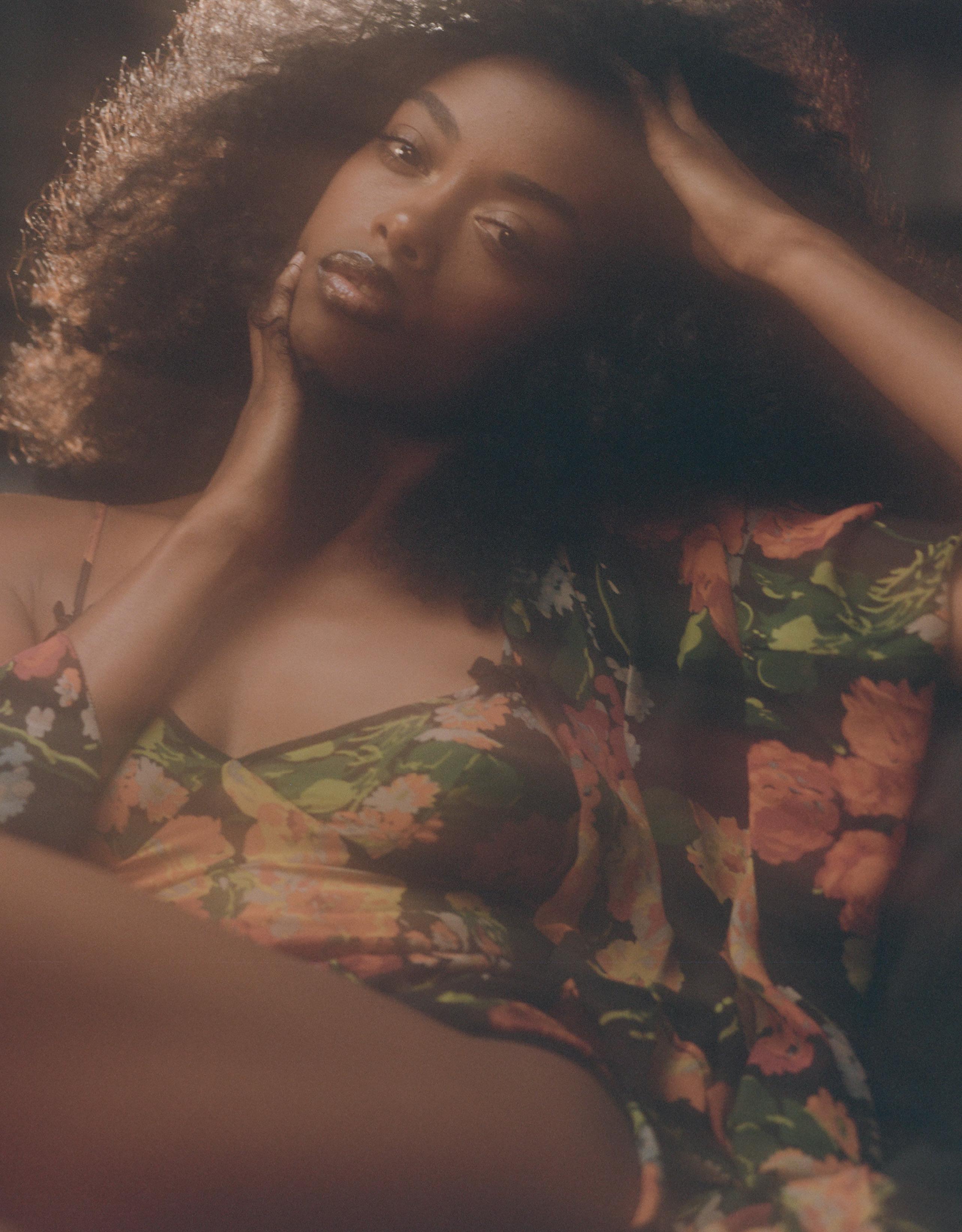
Renell Medrano in conversation with Deidre Dyer on the casting that brought Ice Magazine Vol. 1 into existence.
‘I
DEIDRE
DYER: How would you describe what you’ve created and sought to create with Ice Studios?
RENELL MEDRANO: Ice Studios is pretty self-explanatory for me. It’s a creative place, a platform for my friends, and women like me. It covers everything from production and creative work to clothes and visuals. It’s the world I’ve been building for so long. Half the time, people will just say, “Yo, it’s definitely giving Ice Studios for sure,” without me having to explain it.
DYER: Girls that get it, get it.
MEDRANO: Exactly.
DYER: Which is crazy, because seeing the casting call day on Instagram, I was like, “Oh my God, yes. The Ice Girlies have assembled.”
MEDRANO: I know. I honestly downplayed it. I posted the flier thinking, “Okay, maybe 50 girls will show up.” But it was crazy—in a good way.
DYER: Tell me about the inspiration for this magazine.
MEDRANO: To be honest, I’ve wanted to do this for so long. Ice is about highlighting the natural girls, the regular girls, not just talent or your typical model.
I used to collect Players magazine. When you flip through, it’s beautiful, natural women. That’s what I want to represent when you think of an Ice Girl.
“IT’S STILL GIVING SEXY, BUT IT’S NOT ABOUT BEING NAKED. I WANTED TO CREATE A PLACE WHERE WOMEN COULD FEEL COMFORTABLE AND FREE”
Renell Medrano
As for fashion, I’m a bit bored with it at the moment. It feels like the same thing over and over. The same cookie-cutter fashion, the same models. But, with me, I find so much fun and inspiration in the girls around me, the ones I grew up with. So it just felt right. It wasn’t anything forced. I woke up, and I was just like, I’m going to have a casting call, and then I’m going to pick some girls out of that, and then I’m just going to shoot it with my friend, Marika [Marika-Ella Ames], who I tend to collaborate a lot with.
I said, “Let’s run it.” And I did the casting, and shot a few days after.
DYER: Thinking of the universe of sensuality in print, each magazine had a different vibe. Black Tail was very raunchy, very spread-eagle. Talk to me about what set Players apart from Black Tail, or even Playboy, which is historically more white-centered. Why is Players your inspiration?
MEDRANO: I feel like Black women are often overly sexualized, and I wanted to explore that because I also see it as beau-

tiful in its own way. When we see a white woman naked, it’s often seen as fine, calm, but with Black women, it’s always a problem. It’s like we’re doing too much. When I shot for this, it’s still giving sexy, but it’s not about being naked. I wanted to create a place where women could feel comfortable and free. Instagram can get weird, but there’s beauty in sensuality without being raunchy or nasty.
“DURING
THE CASTING,
IT FELT
NICE SEEING ALL THE GIRLS COMFORTABLE, FROM SKINNY GIRLS TO PLUS-SIZED GIRLS, JUST HAPPY TO BE WITH EACH OTHER IN A SAFE SPACE. I REALIZED THIS WAS BIGGER THAN ME.”
Renell Medrano
were younger. I wonder if that’s part of why we are the way we are today.
ARLETTE: A lot of politics as well, you know? My dad always taught me to own myself. When you enter a room, you command everything. If you don’t feel comfortable, say it. My father gave me a voice, and he taught me not to be intimidated by anyone. That’s something I’d want to pass on, if I had a daughter.
We’re really trying to create something that will mark an archive of who we are. If someone wants to study this time, they’ll have physical, visual records of who we were. People may agree or disagree with us, but at the end of the day, it’s a fact: This is who we are at this point in our lives. It’s a record of our expression, and the space that Renell and I create comes from the heart.


DYER: Well, let’s talk about the collaborators you chose.
MEDRANO: With Marika, she wanted each girl to feel like they were playing a role, which was kind of cool.
DYER: That helps take them outside of themselves.
MEDRANO: Exactly. So when we gave each girl a look, it was something completely different from what they would normally do. You come and get to be someone else in a playful way.
Nikki Nelms is the OG. I didn’t even have to explain to her what hairstyles to give the girls. She’d look at the girls and say, “She’ll look good with a little pin-up curl. She’ll look good with a little pixie cut.” She comes from that era, too. And then down to Raisa [Flowers]; she’s a legend. She got to play with colors. For this issue, we focused on a 70s, 80s vibe, so it was all of that. For me, it’s my upbringing. It’s the way my mom and aunts used to do their hair and the stuff they had in their household.
So I tend to draw from that in my personal work as well. I finally got to play with that, with freedom. I was able to fully collaborate with these amazing women and just do what we wanted. It was a mix of everyone’s ideas, and Raisa understood the assignment, too.
DYER: When you think about the history of Black magazines, a lot of the narrative was about combating stereotypes around Black life in America. With Players as our version of erotica, it’s on our terms and how we want to be perceived in the world.
At the same time, Players was conceived for a male gaze. There’s something powerful about women seeing women, and bringing female collaborators. How do you see female sensuality, and what does it mean to own that, rather than create it for the male gaze?
MEDRANO: Right now, women want to feel comfortable and sexy, but we tend to hide from that—especially as Black women because we’re often overly sexualized. I wanted to give space for us to see each other say, “It’s okay to be sexy in your own skin,” whether you’re round and curvy or petite.
During the casting, it felt nice seeing all the girls comfortable, from skinny girls to plus-sized girls, just happy to be with each other in a safe space. I realized this was bigger than me. This whole situation is not even about what I want to do. For girls like me to feel comfortable, be seen, feel sexy, and just be natural and raw— that’s the important part.
Renell Medrano and Arlette in conversation
Arlette’s world is shaped from the raw and the refined. She wields metals, volcanic rock, and acrylic paint as vessels for memory and spiritual resonance that speak of an upbringing alongside her father in Mexico at the talabartería. Her debut solo exhibit, José, named in reverence to her father, echoes the weight of this lineage. “My roots come from knowing how to work with leather and metals. When was young, my father trained horses for a living, and I would go with him everywhere,” she says.

DYER: I’m getting chills, it’s so beautiful.
MEDRANO: I’m happy that I could embrace that with these girls. Like I said, it doesn’t necessarily need to always be raunchy. It could just be down to the energy that each woman brings.
Her craftsmanship involves welding, sculpting, clothing design that brings forth wearable art, and evocative wordplay—prayers in the form of art. It all creates a sensory experience you can feel in your chest. It is at once spiritual and unflinchingly carnal. Kendrick Lamar wore pieces designed by Arlette during the The Big Steppers Tour where this duality is expressed.
Renell and Arlette first met in London and reconnected over the years. Here, they discuss how they tap into masculinity to create spaces where their visions can thrive.
—Darian Symoné
Harvin
RENELL MEDRANO: We have similarities in character. Arlette and I joke about how we’re the men in situations. It’s interesting how our approach to certain things is very masculine, and how that helps with our careers.
ARLETTE: Renell and I see it as a way of expressing ourselves, because we were brought up in environments where being true to your word was essential, like men traditionally are. We don’t deal with bullshit, and that’s the thing. I think it’s really healthy how we do things, honestly. [Laughs.]
MEDRANO: Growing up, I was really close with my dad, who has always been a well-respected man. He still is. I always loved that about him and wanted to carry that same presence and energy. Whenever he stepped into a room or dealt with business, he was always respected. I absorbed that masculine energy and wanted to embody it myself. Arlette, I think you feel the same way about your dad being a big inspiration to you when you
ARLETTE: I always say my sculptures are really sexy, because metal is really sexy—how it looks, how defined it is. My focus is really on the technical part; I’m obsessed with my craft. I think my sculptures are really beautiful. [Laughs.] There are parts that are aesthetically-pleasing, and I just adore them. I really do.
One thing that Ice Girls should know is that you have to be proud of your work, no matter what. That’s something my mother always taught me. Most of all, I’m a good salesperson. Even if it’s not perfect, you have to say, “I’m proud. I love it.”
MEDRANO: I was in DR shooting for the show, and I told Arlette, “Bro, I kind of went all in. Like, damn, I overdid it. I outdid myself. I love it.”
ARLETTE: When Kendrick’s team first reached out to me, they just wanted one thing, but I gave them my full vision. I showed them everything I was capable of, doing the outfit when they only asked for one piece. And because of that, they hired me for the whole tour. So, one thing I want to share is that you have to be confident. Sexiness isn’t just about presenting yourself as sexy— it’s about being proud of your work. You have to say, “This is beautiful. Let me go and show it.”
A lot of people are always second-guessing themselves, thinking, “What am I doing? Is this project good enough?” We spend a lot of time in our heads, but I think it’s important to just do it— show it. Once you put it out there, you’re going to get better. And if someone critiques you and says, “That’s bullshit,” ask them why. You can improve from there.
“SEXINESS ISN’T JUST ABOUT PRESENTING YOURSELF AS SEXY—IT’S ABOUT BEING PROUD OF YOUR WORK.” Arlette
As told to Darian Symoné Harvin
I’m into things that feel like they’ve been brewing, like a slow-cooked process—not something fast and fly-by-night. Ice Studios feels original, starting with a person, and the aesthetic grew from that connection. There are levels and layers. Slow and steady wins the race, if there even is a race. Or maybe winning is maintaining your pace. That’s the win. Not even overthinking it—just being it. It’s not about following a set trend or formula, because there is no formula to being an Ice Girl. There are no steps to follow. There is only one rule: Be yourself. When you’re yourself, you’re an Ice Girl.
I will say the thing that is never changing, it’s a constant, is being confident in yourself and trying your hardest to find what your thing is. Your individuality is the thing that sets you apart, and that is your key to unlock your door. You can’t take any shortcuts to figure out what your aesthetic is.
And as long as you’re learning your lessons, right? If people give you unsolicited advice, figure out what you’re gonna take and what you’re not. As long as you’re in tune with yourself, and listening to the feedback of people whose opinions you actually trust and care about.
There could be an Ice Girl checklist. I never received it. So, by my definition, I think I’m an Ice Girl, because I do what the fuck I want to do. You know what I mean?
Yara Shahidi, Janelle
and Solange, see her as a trusted collaborator, an indispensable presence in their creative process. Her work can completely change the atmosphere of an entire room, red carpet, or studio set. And she does it under the requirement she’s set for herself to constantly deliver. She has no shortage of ideas that push you to think about what hair can really say about you.
“My
dream is to build a powerful and authentic presence in the world, where can inspire others through my confidence, style, and individuality.”
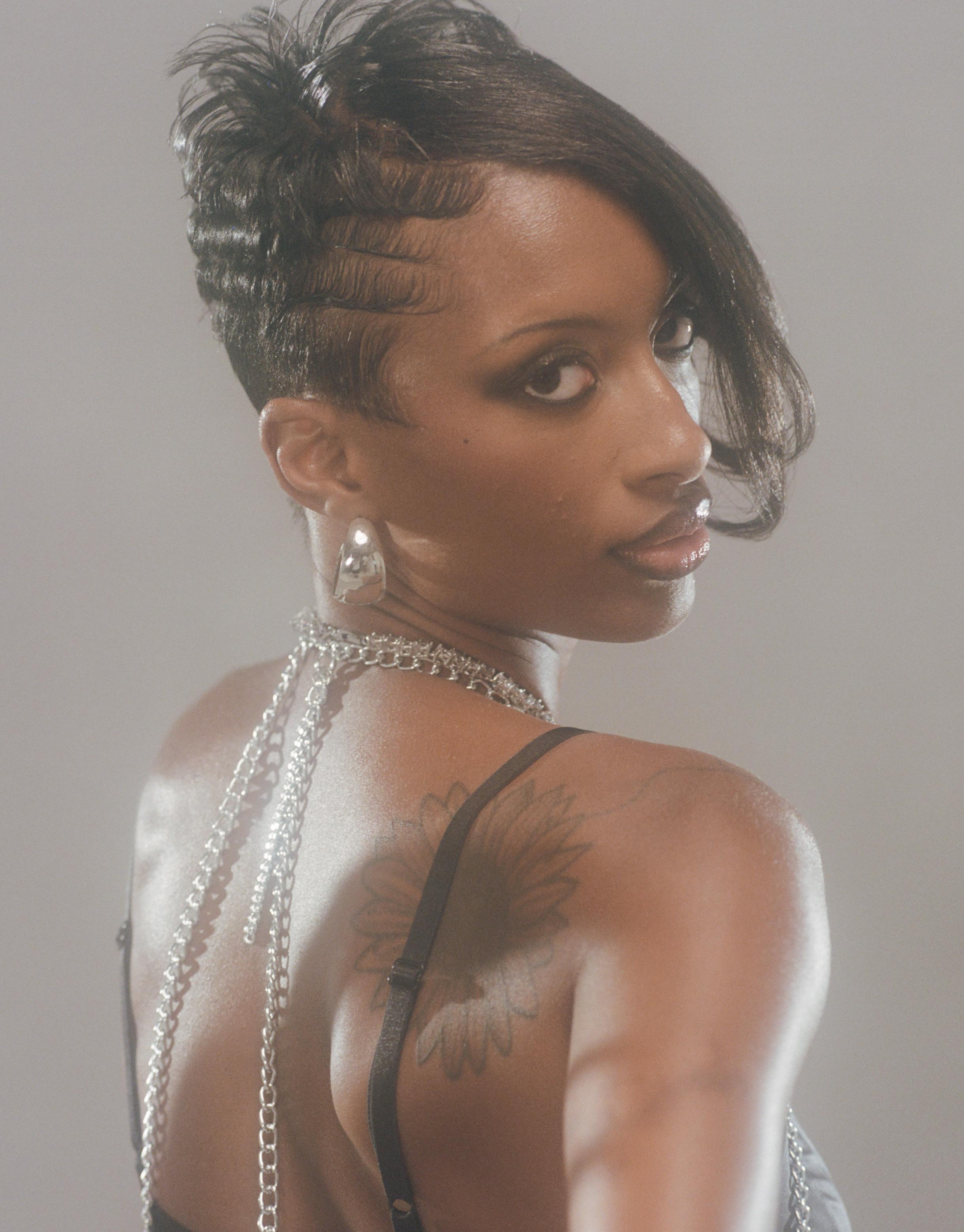




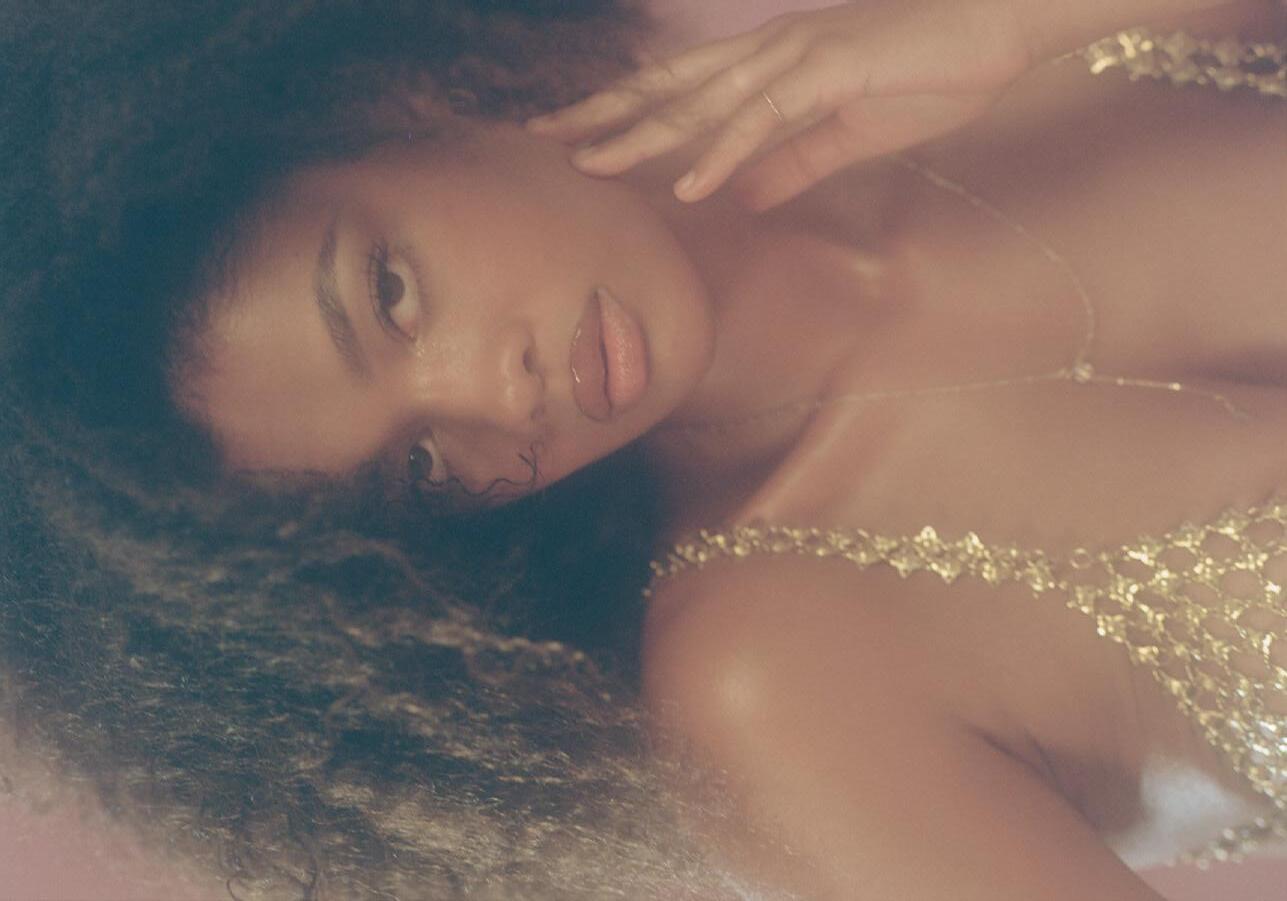



“I feel most in tune with my true self when I’m back in the Caribbean, surrounded by nature. My everyday worries are so minuscule when I’m back home. My doubts and worries are gone; negative self image is nonexistent.”




“I’m learning so much about the bigger and more stressful parts of life, but the feeling of being my own free woman is more fulfilling than can describe. Growing pains hurt, but I’ve realized the outcome is so worth it.”

KHAMAIRE Isherownfreewoman KHAMAIRE Isherownfreewoman

“My sensuality has grown from leaning away from lust and more towards true desire. Becoming more comfortable in my own body and with myself”



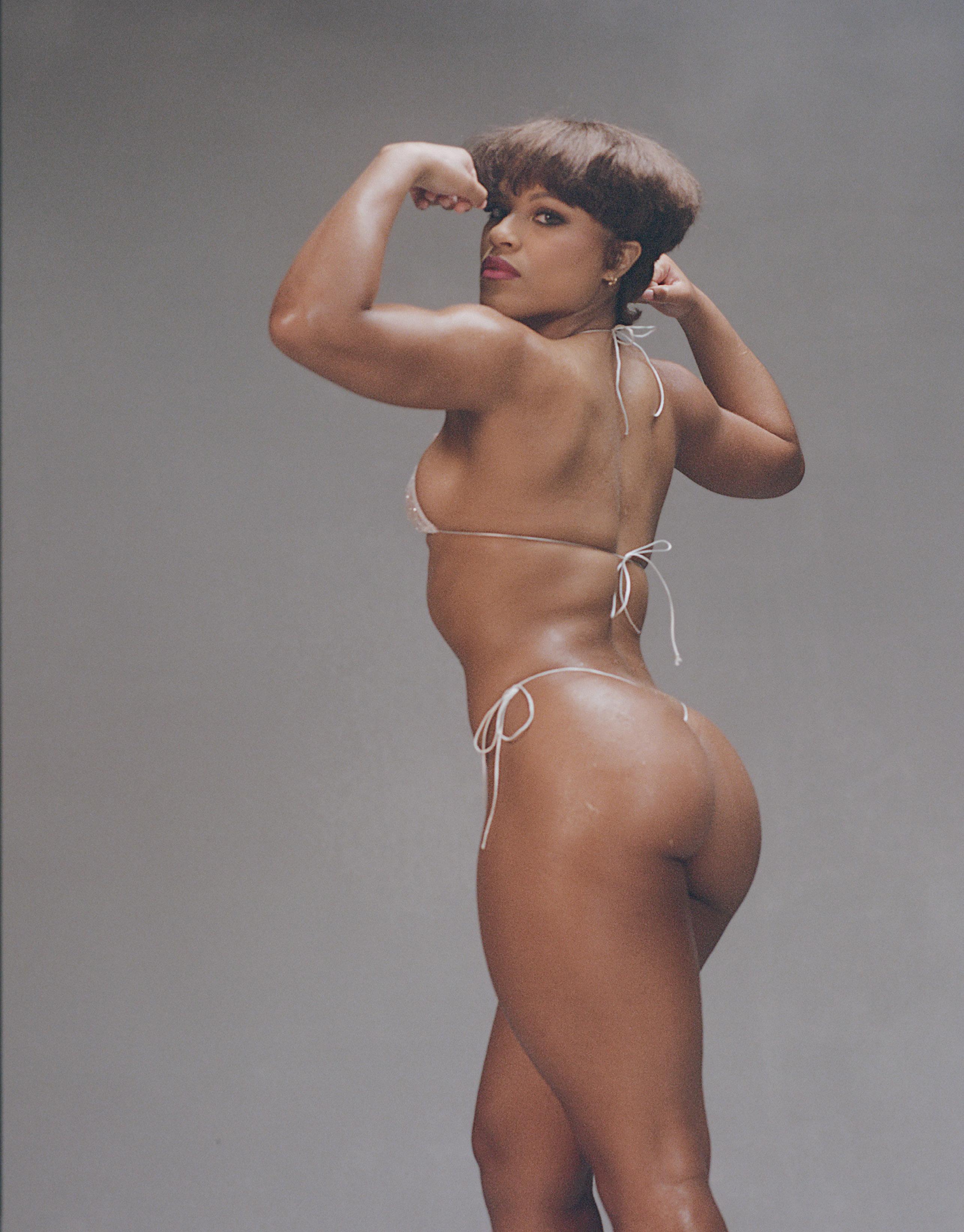
“One
of my many
How do you express your inner strength?
“Through my integrity and assertiveness, two qualities I take much pride in.”
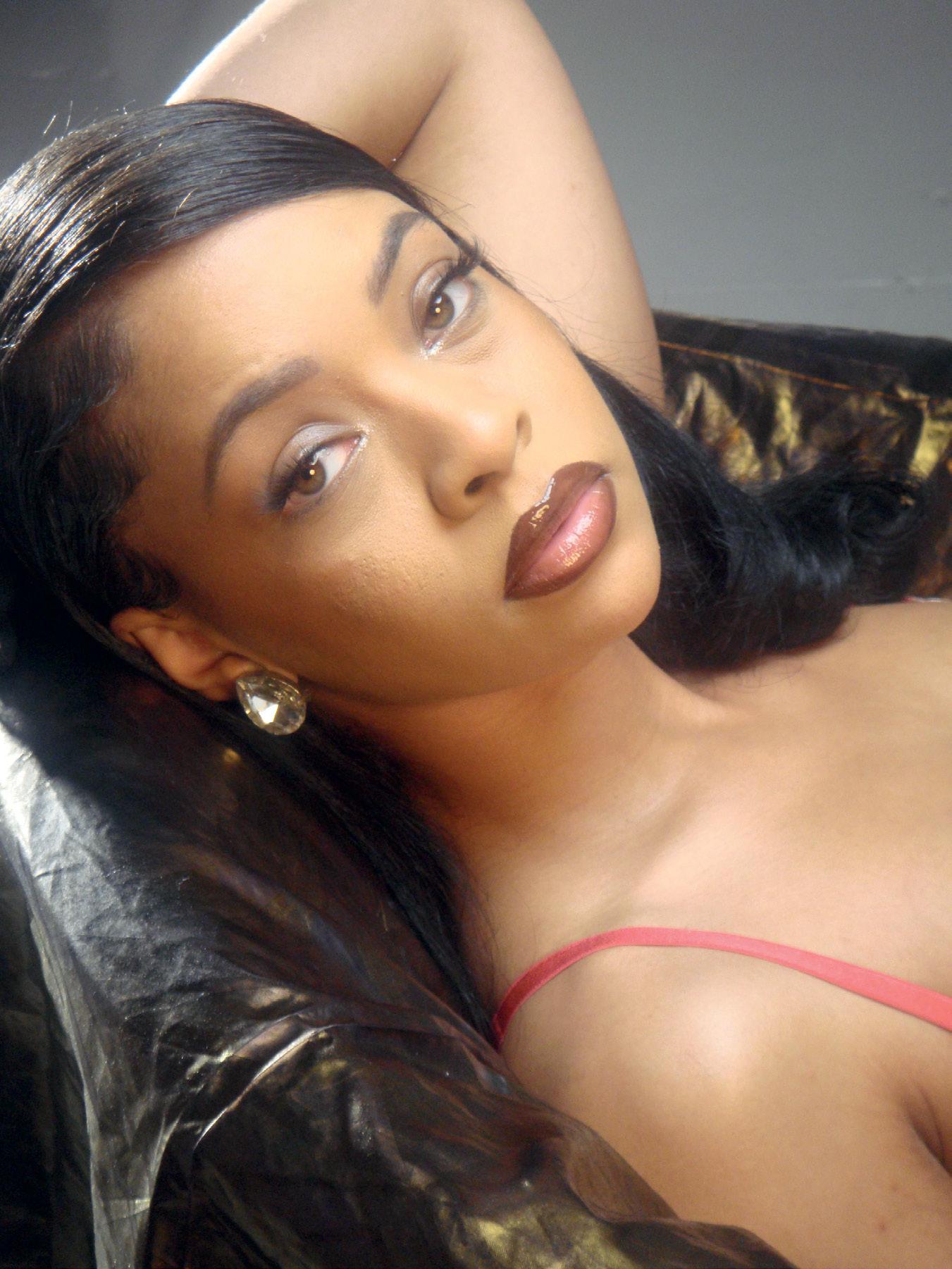
Renell Medrano and Marika-Ella Ames in conversation
MARIKA-ELLA AMES: I was in your studio, and you had a copy of an old Players magazine. Flicking through that, you told me that you wanted to create a magazine focused on women shot by women, including yourself, and do it in a modern way. So we started from there, imagining and thinking of different ideas. We didn’t really have a set date or a grand direction in mind.
And then you dropped the casting.
RENELL MEDRANO: Ha!
AMES: Then we went through the pictures, maybe four or five hundred girls, and it was really amazing to see. Everyone was a real girl. They had real personalities. You could tell that some of the girls were maybe from uptown, some of them from Brooklyn, some of them had tattoos, some of them had shaved heads. It was a really eclectic mix of women. But I remember saying to you, all those girls were so confident, regardless if they had the status quo body or the status quo look, or if they were a bit more diverse in their style. So I think that speaks to who you are and how you represent yourself and your brand online.
MEDRANO: After that whole experience, I was like, “Okay, that’s what an Ice Girl is.”
AMES: Those 360-degree, beautiful epiphany moments are why we do what we do.
MEDRANO: What would you say is that singular word for this Ice Magazine? Shoot.
AMES: When we discussed how we wanted everything to feel, we decided on nostalgia, which really stuck with me as I was pulling all the clothes and looking at the fashion references. In the past couple of projects that we’ve done together, there’s been a recurring theme of nostalgia in your work—whether it’s from the late 1960s, early 70s, 90s, or early 2000s.
That type of woman—whether she’s in hip-hop, an R&B star, or the around-the-way girl— resonates with me as a stylist. When I had the girls in front of me, and we decided on the hair and makeup direction, it already brought an element of nostalgia. I had a lot of different outfits in my head, and when each girl was in front of me, that’s when I decided, “Oh, you are that girl. You’re in that world.” I think we work quite intuitively. We try to plan as much as we can, but—
MEDRANO: But the magic happens. Honestly, it’s so funny because people would not guess the way things go down on set. I mean, it’s very important that I trust the people I work with. With women, especially Black women being overly sexualized, how do you navigate bringing out both the softness and boldness of a Black woman through clothes?
AMES: Of course, they’re in lingerie, so there’s a level of comfort involved. They’re real girls, so I have to take into account what they’re comfortable wearing. I was just thinking about Raisa’s sister and putting her in those leopard print latex chaps, covering her legs with oil and lubricant to get the pieces on. These girls look so confident. They’re radiating. They feel very powerful. They feel very on top. There’s no vulnerability. And I think that’s what defines the female gaze. When we think of women in lingerie or in these more risqué pieces, it’s more catered towards a male gaze. So, if shot by a woman, styled by a woman, with hair and makeup by two women, it’s quite special.
MEDRANO: I also think being women of color, and just being a woman on set, made it easier because half of this industry is men, and it’s tough.
AMES: Especially being on set as a woman, there’s already that element of trust there. I feel like we both have a similar outlook, where we don’t think about it so much, but we are aware that we are women of color in an industry that is predominantly different from us.
Marika-Ella Ames is a stylist who nurtures both art and heritage. It’s evident in her work across magazine editorials, runway shows, lookbooks, and campaigns that are as powerful in their storytelling as they are in visual impact.
Born in Minnesota to a Jamaican father and English mother, Marika moved to the UK during her adolescence—a move that would solidify her love for fashion. Marika’s consulting with Diotima’s Rachel Scott has further brought Jamaica’s unique blend of elegance and vibrancy to the global stage. Her love for storytelling through fashion extends beyond herself. She has carved out a space where the chic and the culturally-resonant coexist.
Marika is Ice Studios’ unofficial/very official stylist. She and Renell had admired each other’s work from afar, until one day when Renell DM’d Marika to ask her whereabouts in the days leading up to a shoot. Marika arrived at a Brooklyn warehouse to style Imaan Hammam for the May 2022 cover of Harper’s Bazaar, which marked the beginning of their ongoing collaboration.
Their partnership, forged through trust and a shared vision, asks a fundamental question: How do we uplift—not necessarily transform—the “regular girl” into the star she already is?
—Darian Symoné Harvin
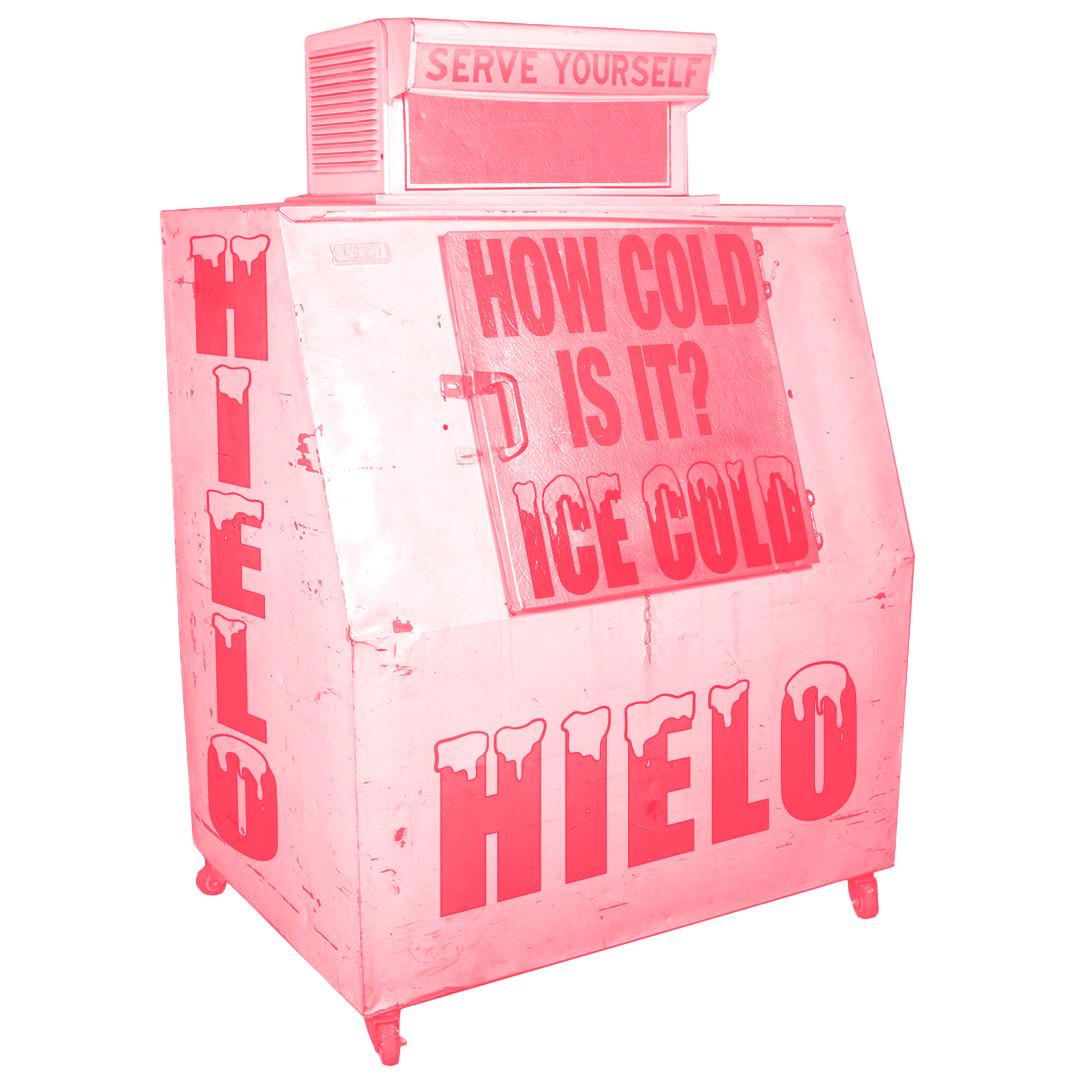
It’s so vulnerable. As a creative, you’re sharing an idea that’s in your head, and the other person can either shut it down or it’s someone who encourages you to try—and even if it’s not working, you let each other come to that realization. You enable each other to express. That’s why we’ve developed such a good friendship; you can really see each other’s characteristics and personality through working together and how you treat one another. For the best final images, you have to have an element of trust with each other.
MEDRANO: Yeah, it’s special. But I guess it’s not new for us. We’ve been shooting real girls across the world for a while now.
“THESE GIRLS LOOK SO CONFIDENT. THEY’RE RADIATING. THEY FEEL VERY POWERFUL. THEY FEEL VERY ON TOP. THERE’S NO VULNERABILITY. THAT’S WHAT DEFINES THE FEMALE GAZE.”
It is perfect alignment for Raisa Flowers to usher the Ice Girl into the spotlight. Raisa has the ability to place her in whatever world she feels most comfortable. Is she rooted in the reality of her stomping grounds, or does she prefer a fantasy world?
Raisa is a multidisciplinary artist, with a foundation in makeup, and a self-described Banjee girl (more on that later). Whether it’s a natural beat or an ethereal look unique to her hand, when you see Raisa’s touch, you know it. Her work reintroduces elements that recall the 1980s and 90s, such as thin eyebrows and deep lip liners, balanced with a nude or colorful gloss, or lipstick. By moving with her heart, she is directing trends you eventually see across pop culture landscapes in the US and the UK.
Raisa’s unique alchemy—a catalyst transforming others as much as herself—has created ripples throughout the industry, leading to a diverse range of creative work: her makeup was featured in MAC’s Studio Fix campaign; she opened Rihanna’s Savage x Fenty show; and she modeled for Calvin Klein. Her presence urges others to rethink all of who they can be. Oh, and she DJs, too. How could she not? She’s a Club Kid at heart, after all.
Renell and Raisa first met on set for the 2017 Fall FADER cover shoot with Kelela. This is only their second time working together, but Raisa says their work runs in tandem, sharing a focus on uplifting the Black body. Here, we discuss how Raisa has become comfortable in her own body, too.
Interview by Darian Symoné Harvin
DARIAN SYMONÉ HARVIN: What aspects of the original Players, an inspiration for this magazine, did you find most interesting?
RAISA FLOWERS: I really loved how they photographed the women, each with their own distinct look. It was super sexy, but at the same time, it had this innocence to it. Some photos were close-ups of their faces, where you could really see their makeup, and I feel like it was a good representation of Black women in that industry, especially in soft porn. There weren’t many Black women featured in Playboy. Very few, to be honest. I liked that Renell had actual Players magazine issues, so I was able to look through them.
HARVIN: Even though Players had cultural significance for Black people, it was still catering to the male gaze. That’s flipped within this project, as it’s shot by a woman. The energy is different when a woman is behind the lens. I’d pick up this magazine just to see and appreciate other women—what they’re wearing and what they’re communicating.
FLOWERS: Women appreciate women, even if some act like they don’t and try to say things that men would say, just to fit in. That happens. But especially as Black women, we appreciate each other a lot. I love it when I see something cool like that. Things like this should be for everybody, not just for the male gaze, honestly.
HARVIN: Also, as women, we’re really at the forefront of consuming media and reading stories. We’re always trying to educate ourselves and stay informed. So, it’s natural for us to gravitate towards images where we feel empowered and seen, because we all know what it’s like to not feel that way.
FLOWERS: Exactly. A lot of times it is just how society tries to make us be robotic in the way that we express ourselves.
HARVIN: Watching Ice Studios and how it has evolved, there’s a lot that goes unsaid because you can feel it and see it. But I still want to ask you, if you had to describe to a friend what an Ice Girl is, how would you go about it?
“THIS IS MY BODY. I’M LIVING IN IT, AND IT’S MINE.” ”
Raisa
FLOWERS: I’m laughing, because earlier I was thinking about this. She’s a Banjee girl. You know the type of girl—she’s fab, she knows herself. She’s got the best hairstyle, nails done, she looks real good. She knows she’s not going to let any dude mess with her. It’s an aesthetic. I’m a Banjee Girl in general. The way I operate in the world and how I exist in my real life, that’s how I’ve always been. Being that girl with the short capris, the band shirt, and the updo. We’re a certain type of girls. JT? She’s Banjee.
HARVIN: There’s something about always being ready as a Banjee girl. Even if you don’t have everything you need to walk out of the house the way you want, you make it work. It’s about how you navigate the world, using your own resources to look and be fly.
FLOWERS: Using what you got. Growing up, my parents worked a lot, and whatever money I made from working or babysitting, I would go and buy makeup with it, and I used that makeup in the beginning of my career. I made whatever I had work.
HARVIN: What has been just a defining moment of your career?
FLOWERS: I would say modeling for Calvin Klein was a real moment. And that had nothing to do with makeup. It just has something to do with self. When I was younger, I would see a lot of Calvin Klein campaigns, and they didn’t have people who looked like me in them. I’m a plussized Black woman, who’s tall, and I don’t see visual representation of myself that much.
It was really a moment of self-gratification. I felt like I was turning a table, especially in my industry, where a lot of people don’t really show their faces. I’m a very unique person in the industry—I do a lot of different things. Makeup is my main thing, but I also model, DJ, and more. So people sometimes misunderstand and wonder, “What is she here for? Is she a makeup artist?” I’m passionate about makeup, but seeing myself in this underwear campaign made me see myself in a different light.
HARVIN: What you’re speaking to right now is about not being afraid to embrace the uniqueness of who you are and your skills, without putting limits on what you can do.
It’s about being a creative and choosing specific outlets to express yourself. A lot of people struggle with giving themselves the freedom to express themselves in ways that feel truly unique to them. To me, it’s beyond a career; it’s about having presence in the world and understanding how your existence inspires other people.
FLOWERS: Yeah, the way I exist in the world does inspire people. Over the years, I’ve had people tell me that something they’ve seen me do really inspired them—especially my ability to be open with my body. I’ve posed nude a lot in my career, done lingerie shoots, like Savage x Fenty and Calvin Klein, and very artistic nude photos. I’m not ashamed to show my body and express myself that way. For me, it feels natural. Years ago, I didn’t have the confidence to do these things or exist in this way, but once I really got into myself, I was able to express that clearly.
HARVIN: How did you develop that confidence over time?
FLOWERS: At one point, I just had a shift. I struggled with my weight and how I saw my body for a long time. I had lost a bunch of weight years ago, but I still couldn’t see myself clearly. I remember having a lot of body dysmorphia at the time, and then my friend Diego Villarreal, the photographer who took some of my more recent nudes, said he wanted to take photos of me. He asked me to take my shirt off and be half-naked, and I was like, “What the hell?” I was so against it in the moment, but then I warmed up to it and did it.
All of a sudden, I had a newfound respect for my body and how I was expressing it. It’s different now.
After that, I did a bunch of nude shoots with different photographers and got super comfortable. I don’t know, something in me just let my hair down, and I was like, “This is my body. I’m living in it, and it’s mine. However I feel about it or want to show it is my own—that’s my own.” For me, it’s something I’m holding on to for myself. A lot of people don’t realize it’s all for you, not for society. Many of us get caught up in what society thinks about our bodies, especially as women and femmes. But honestly, F society. It has already created so much toxicity around our mindsets. Why should I listen to society when I could just listen to myself?
“How you treat others is a reflection of your inner self, so like to express my inner strength through kindness and empathy.”
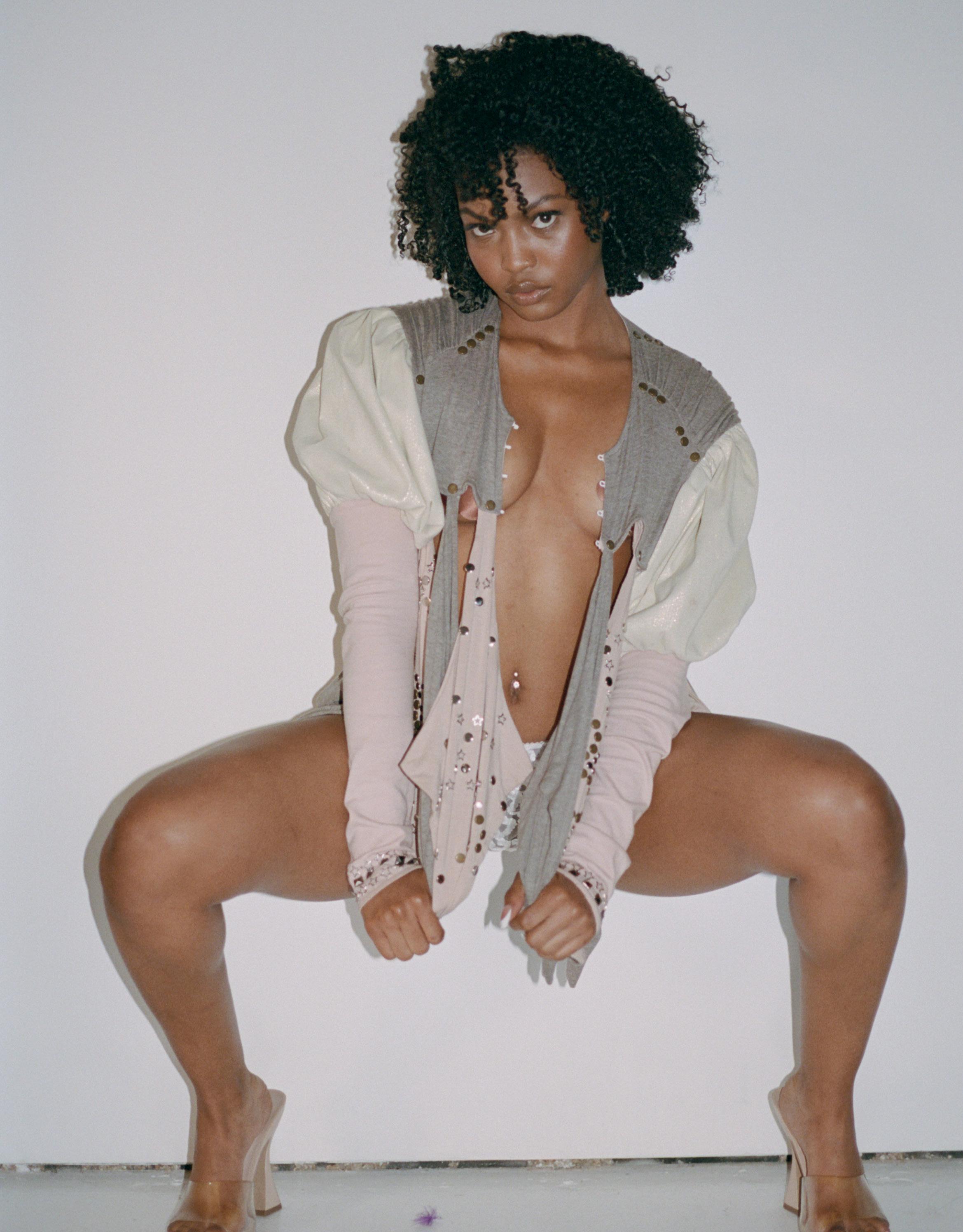

How are you still growing as a woman?
“By understanding that energy plays a role in most things. am a woman, but firstly I’m a womban, and that gives me so much power. just have to possess it from within. Spiritually, I’m still growing.”
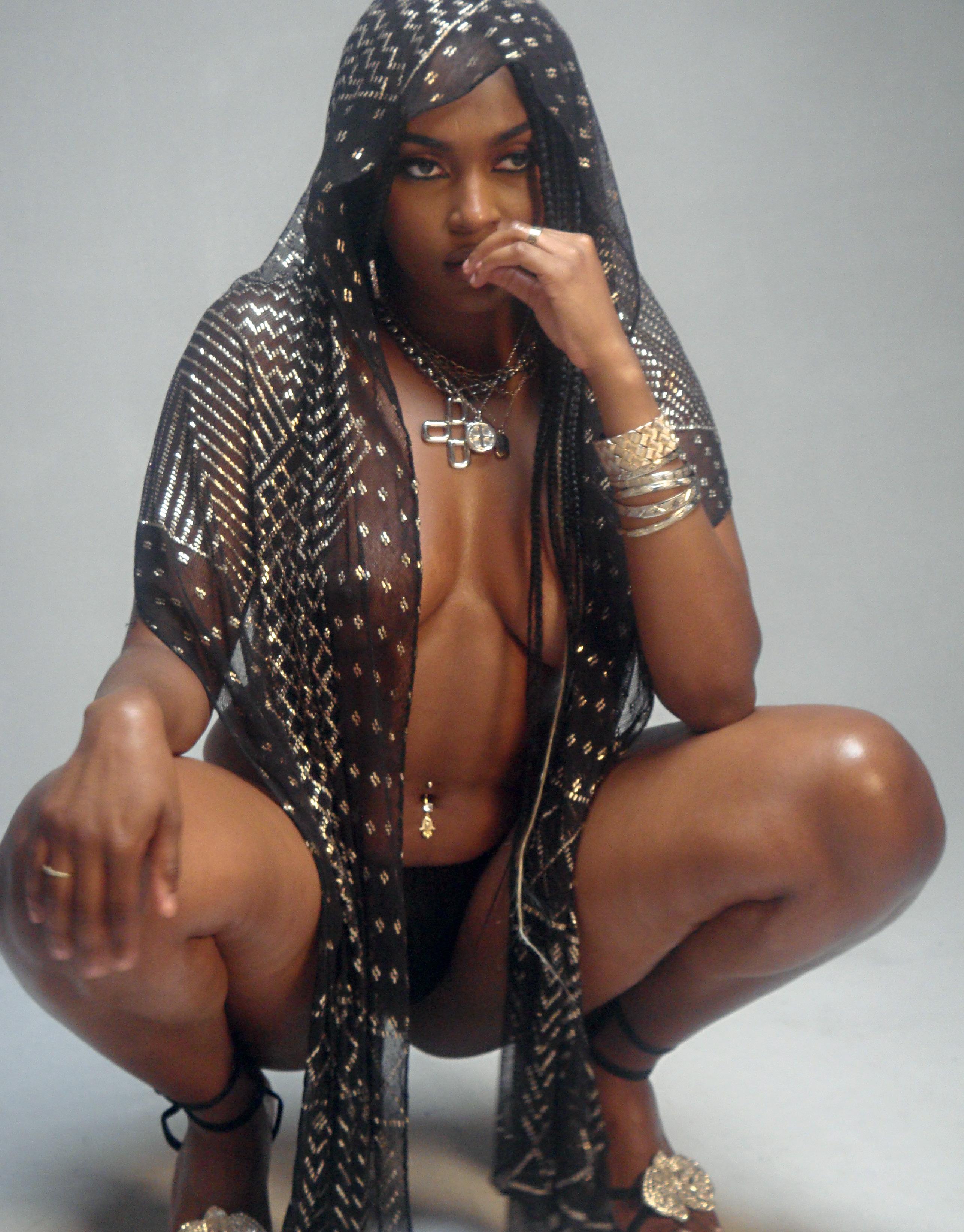

THE ONE AND ONLY . . . HIELO . . .ORIGINAL, DYNAMIC, AWARE. . . TRULY A REFLECTION OF THE SOULFUL FEMALE IN ALL OF US.








“I’ve been giving myself chances and charging it to the game if things don't go my way. I’m constantly reminding myself that I don’t want to live a life that I’ll look back on regretting the chances didn’t take.”




“I need to die feeling like I came as close to my potential as I could, and that was true to myself.”
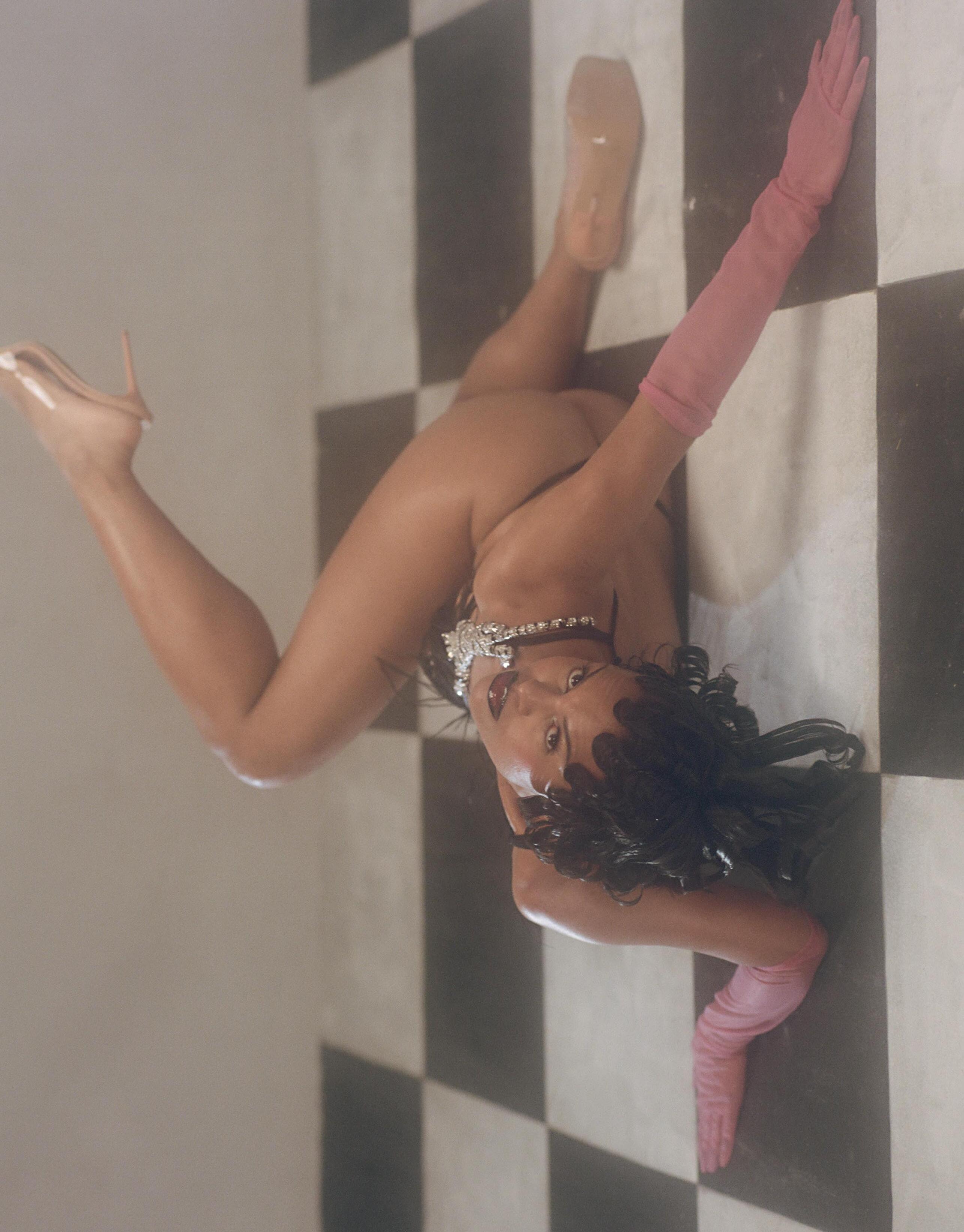
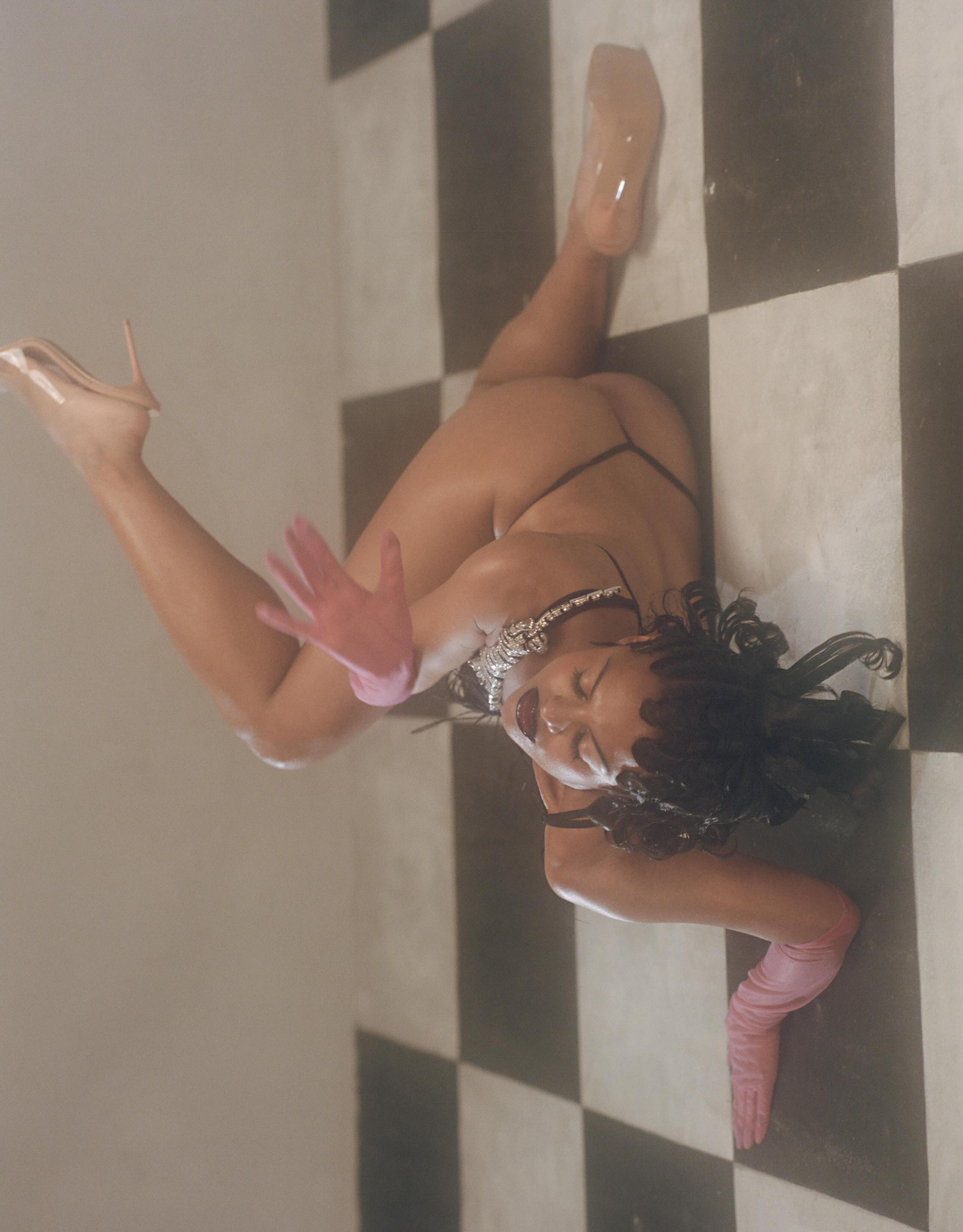

How do you express your inner strength?
“I am still working on this, but it takes real strength to be soft; try my best not to let the world and its pain dim my light and my capacity to love and be loved.”
“I wake up as a new person almost every day. This current stage of my life is focused on security and peace.”
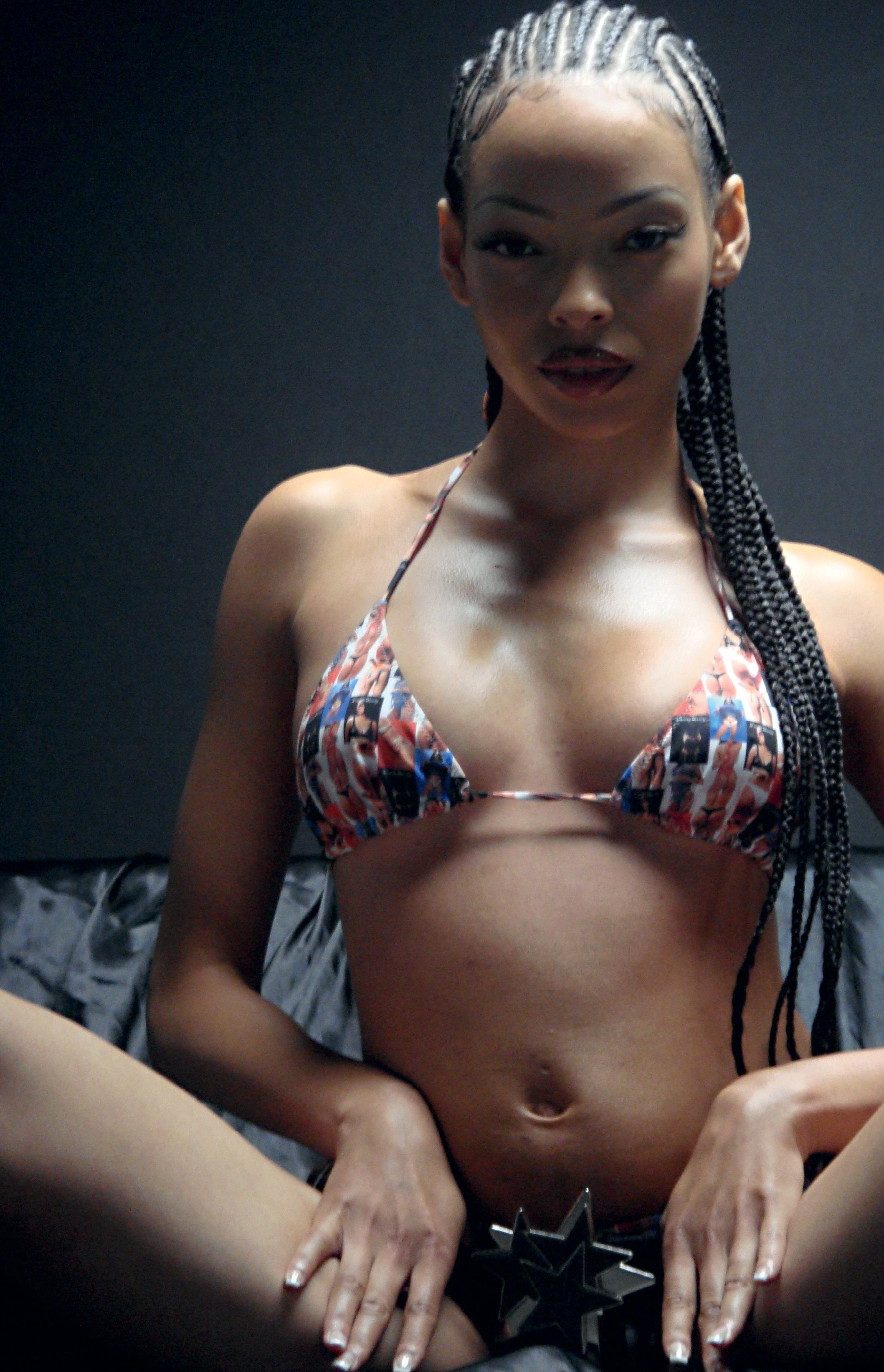



“I grew into my sensuality by removing the idea |of shame around my physical body and my emotions, while learning what it means to be a free spirit.”
—Binz
What motivates you?
“The women in my life—my friends, cousins, aunts, and grandmothers. Looking back at where and who I come from, as well as how much I’ve overcome and grown as a person.”
—Luvv
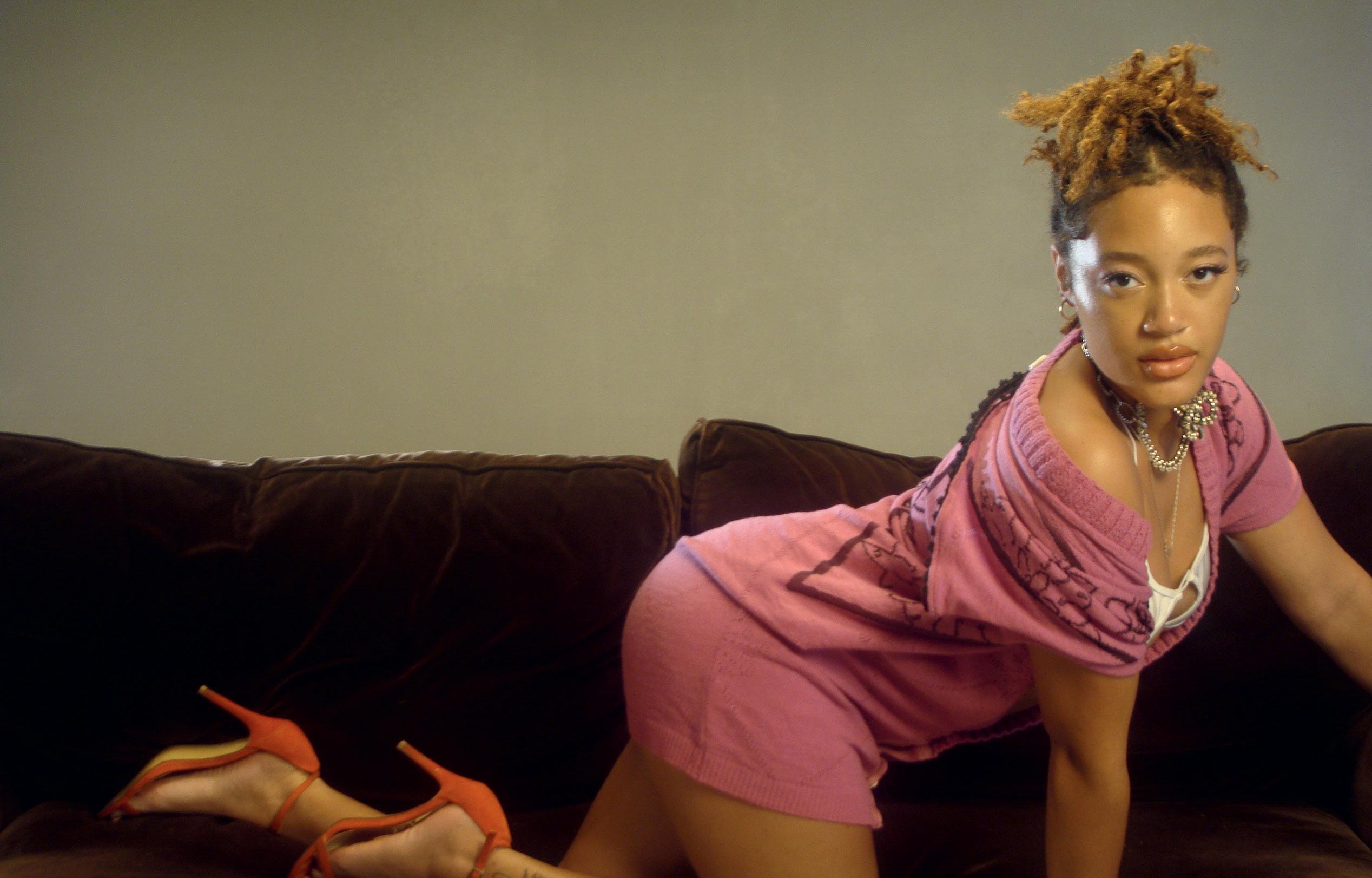




"My dream is to continue being creative and bringing my own unique vision across mediums to the world. Showing people that you don’t have to just be one thing and box yourself in. You can do it all and do it well."




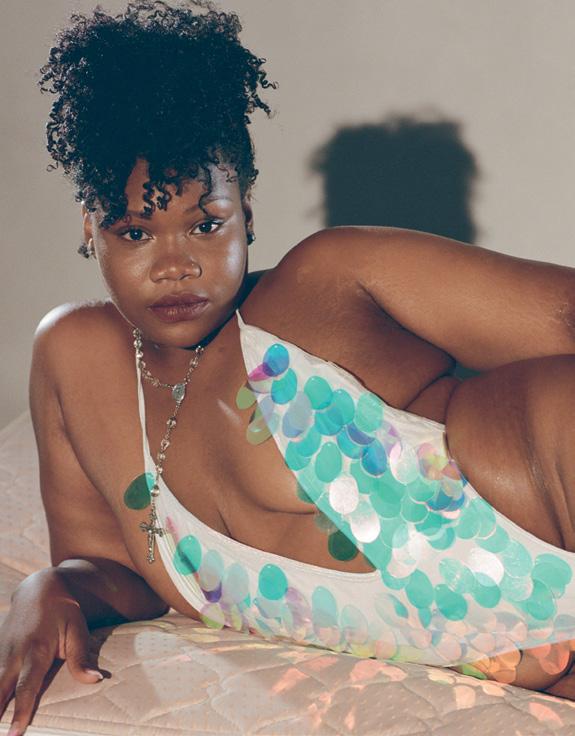



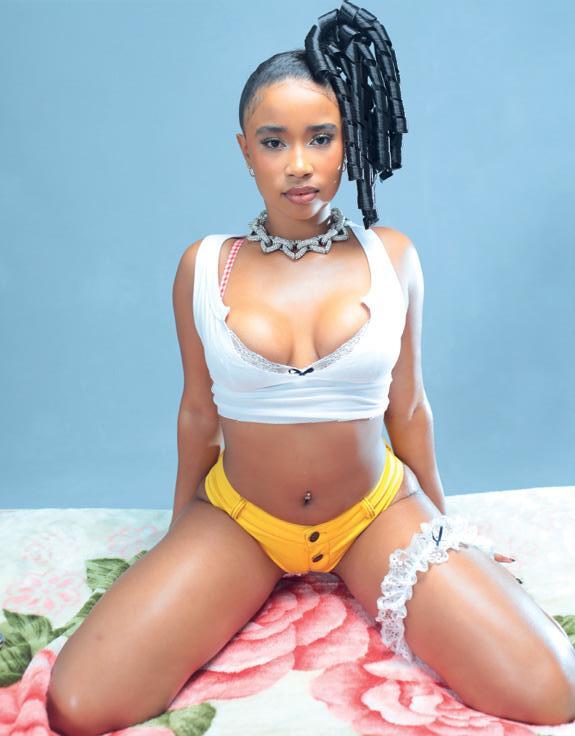

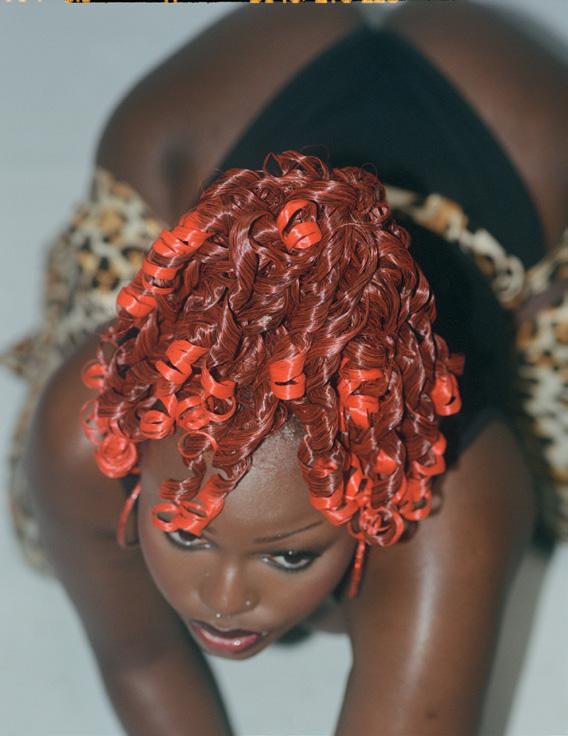




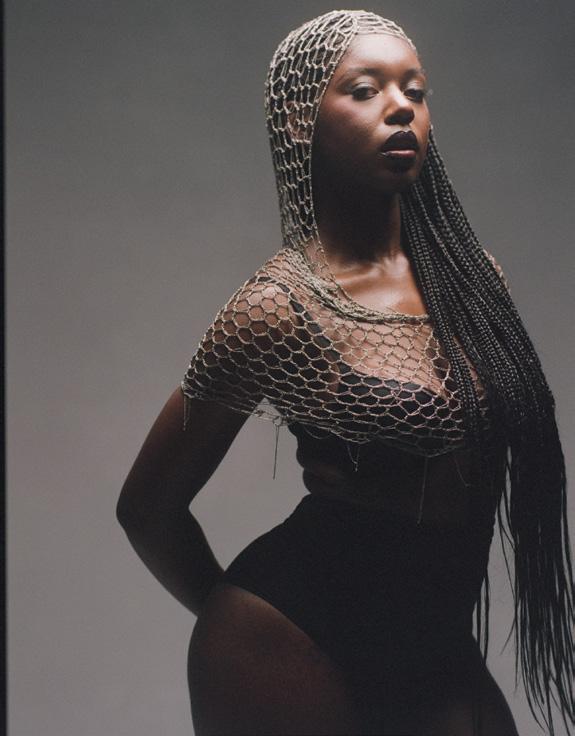




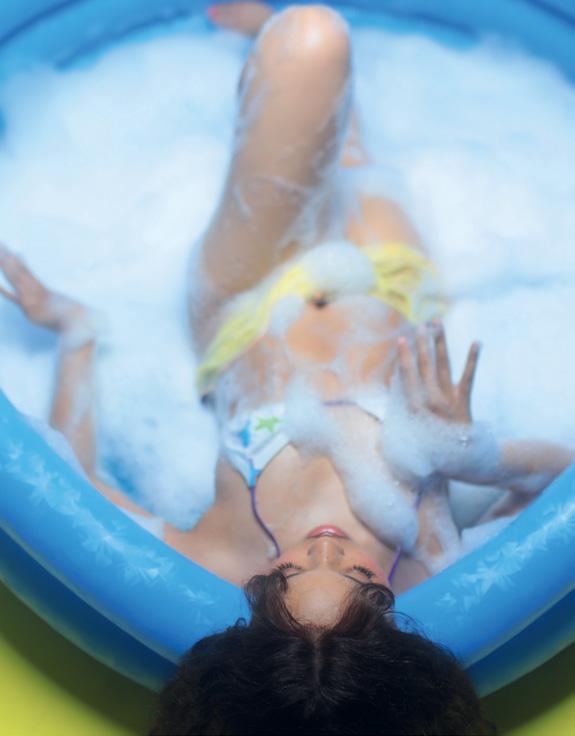
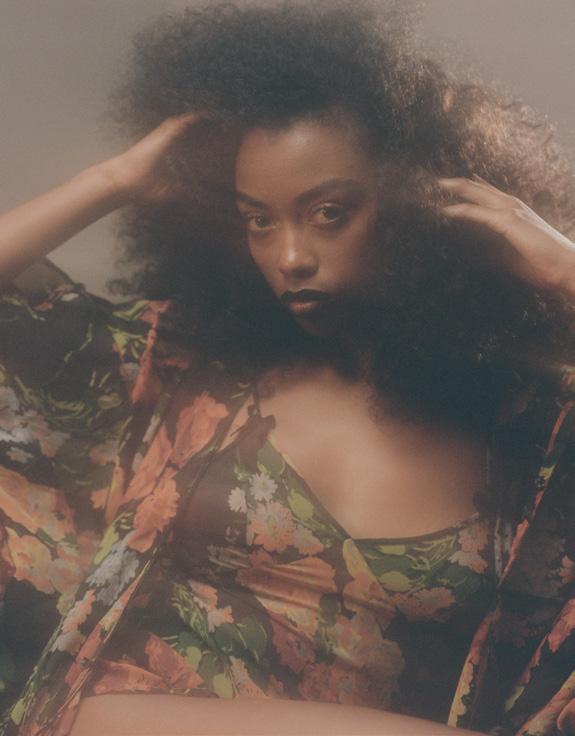









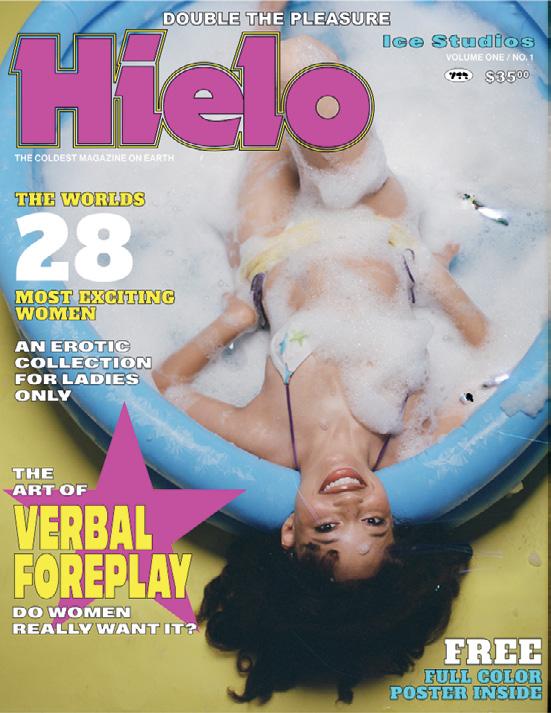

TROI wears lingerie set by Miss Crofton, vintage shoes from Found and Vision archive
ROLANDA wears Vintage feather boa from Found and Vision Archive, shorts by Katya Zelenstova, nipple covers models own
CHINA wears Bathing suit bottoms from Dos Swim, Vintage shoes from Found and Vision archive
SHADAE wears Fruity Booty tank top, Vintage boa from Gillian Horsup, Vintage skirt stylist’s own
MERYSA wears bra, panties and gloves from Fruity Booty
NAILAH wears cuff and t-shirt worn as skirt from Rellik Archive, vintage bra and earring from Found and Vision archive
CHLOE wears robe and camisole from Agent Provocateur
HONEY wears bra by Dora Larsen, metal chain bodysuit by Rellik Archive
TUESDAY wears bra and garter belt by Fruity Booty, necklace from Rellik Archive, shoes from Found and Vision Archive
SARINA wears bodysuit stylist’s own, earrings from Rellik archive
NYA wears vintage gold coin lingerie set from Found and Vision archive
NADIA wears lingerie set from Exotics on Hollywood Blvd, earrings from Rellik archive
KHAMAIRE wears bodysuit from Exotics on Hollywood Blvd, rosarie chain models own
POWER wears vintage egyptian 1940’s scarf and shoes from Found and Vision archive, necklaces from Laura Lombardi, panties from Fifi Chachnil
JACAIRA wears bathing suit from Dos Swim, skirt from Exotics on Hollywood Blvd
EVAN wears metal hooded piece by Arlette, vintage from La Perla
SIRA wears swimsuit from Dos Swim, and earrings from Rellik archive
YOLIBEL wears lingerie bodysuit and gloves from Found and Vision archive, panther 1920’s broach from Gillian Horsup
INDIA wears bra by Kiki de Montparnasse, vintage Givenchy Earrings from Susan Caplan
BRIA wears lingerie set from Fruity Booty, Vintage necklace from Gillian Horsup
TATTIANA wears latex chaps from Elissa Poppy, black bodysuit from Agent Provocateur
BRIANA wears bikini from Fruity Booty and vintage belt from Rellik archive
KYLIE wears vintage earrings from Rellik archive, bikini bottoms from Exotics on Hollywood Blvd
BINZ wears dress from Katya Zelenstova, bra from Exotics on Hollywood Blvd, necklace from Rellik Archive, shoes models own
LUVV wears top from Samanta Virginio and panties from Exotics on Hollywood Blvd, hair pin from Rellik Archive, shoes models own
WeTransfer,
LEAF wears bandeau from Katya Zelenstova, belt by Gimaguas, hat glove and earrings from Found and Vision archive
JASMINE wears top from Katya Zelenstova, panties from Fifi Chachnil, shoes models own
BERTA wears lingerie set by Miss Crofton, Tights from Wolford, Vintage gloves from Found and Vision archive

